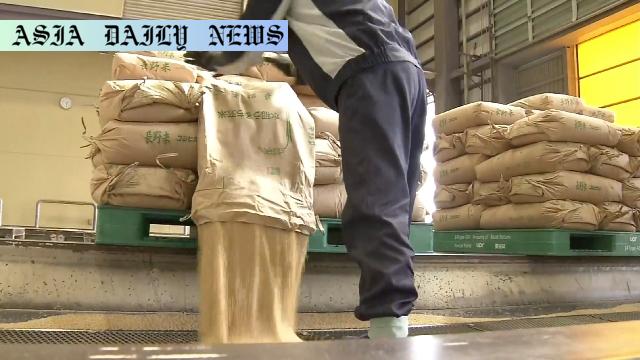rice stockpiles: To tackle soaring rice prices and consumption concerns, Japan plans to tweak auction rules to ensure better supply management.
Japan plans to ease conditions for buying back stockpiled rice.
The agriculture ministry intends to extend auction deadlines by several years.
Monthly releases of 100,000 tons through July aim to stabilize prices.
Wholesalers prioritizing retailer supplies will receive auction preference.

Introduction: Addressing Rice Supply and Pricing Challenges
The Japanese government is taking definitive steps to counter rice supply shortages and control escalating retail prices. In response to current market dynamics, the agriculture ministry has unveiled plans to ease bidding conditions on stockpiled rice. This pivotal policy change not only seeks to stabilize supply but also aims to reassure consumers regarding future availability of this staple food.
Flexible Buyback Deadlines: A Bold Move
One of the key policy revisions involves extending the buyback deadlines for wholesalers participating in rice auctions. Until now, wholesalers were obligated to repurchase the same quantity of rice sold by the government within a year. By extending this deadline by several years, wholesalers gain greater flexibility, enabling them to better manage inventory and supply chains. However, rice harvested in the autumn will be excluded from this adjustment, ensuring that fresh produce is earmarked for direct consumer markets while older stockpiles are adequately utilized.
Strengthening Rice Supply Through Monthly Releases
To stabilize the supply and alleviate market concerns, the government will continue releasing 100,000 tons of stockpiled rice monthly through July. This initiative is designed to meet immediate demands and curb price surges. Furthermore, the agriculture ministry is considering auction protocols that favor wholesalers who commit to distributing rice directly to retailers, thereby supporting the end consumer.
Projecting Consumer Impact
The current retail price of rice is roughly double compared to a year ago, creating significant economic strain for households reliant on this essential staple. While deliberate price control strategies, like releasing reserves, promise short-term relief, the government hopes its extended buyback deadline will secure longer-term stability. Crucially, these changes illustrate the commitment to balancing supply and demand while addressing public apprehensions over food security during these economically volatile times.
Conclusion: Balancing Policy and Public Need
The Japanese government’s proactive measures highlight its responsiveness to evolving economic pressures. By fine-tuning auction rules, streamlining stockpiles, and investing in consumer welfare through stable pricing, policymakers are safeguarding a national staple. While the road to normalized rice prices may require sustained effort, these strategic interventions represent a commendable pivot toward a more resilient agricultural economy.



Commentary
Introduction: Policy Adaptations to an Essential Challenge
Japan’s decision to amend bidding conditions for its stockpiled rice reflects a bold step in addressing surging retail prices and supply shortages. As rice serves as a dietary mainstay for millions, the actions taken highlight the intricate balance governments must maintain in securing food staples without destabilizing markets. This adjustment offers a thoughtful approach to alleviate public concerns while ensuring essential resources meet current demands.
The Value of Immediate Changes
Extending buyback deadlines could serve as a lifeline for wholesalers, giving them the room and flexibility to maneuver in a challenging market. By striking down stringent deadlines and opening up more distributive opportunities, this policy demonstrates an acute understanding of market flows. Additionally, harvesting fresh rice specifically allocated for direct public consumption is an efficient refinement—innovative, yet logical at its core.
Long-Term Considerations
However, this policy evolution is a precursor rather than a definitive resolution. Food security policies must address not only short-term fluctuations in supply and pricing but also growing climate-related challenges that influence agricultural outputs. Extending deadlines or reserving stockpiles are immediate steps—valuable, yet requiring timely refinement to secure sustainable outcomes across demographic groups.
Conclusion: A Strategic Shift Worth Recognition
Overall, the government’s policy shift underscores a crucial recognition: food staples are not merely economic commodities but integral to social stability. While new challenges may continue to emerge, this strategic transparency in safeguarding essentials like rice ensures public trust and broadens avenues for innovations rooted in public welfare and equity.